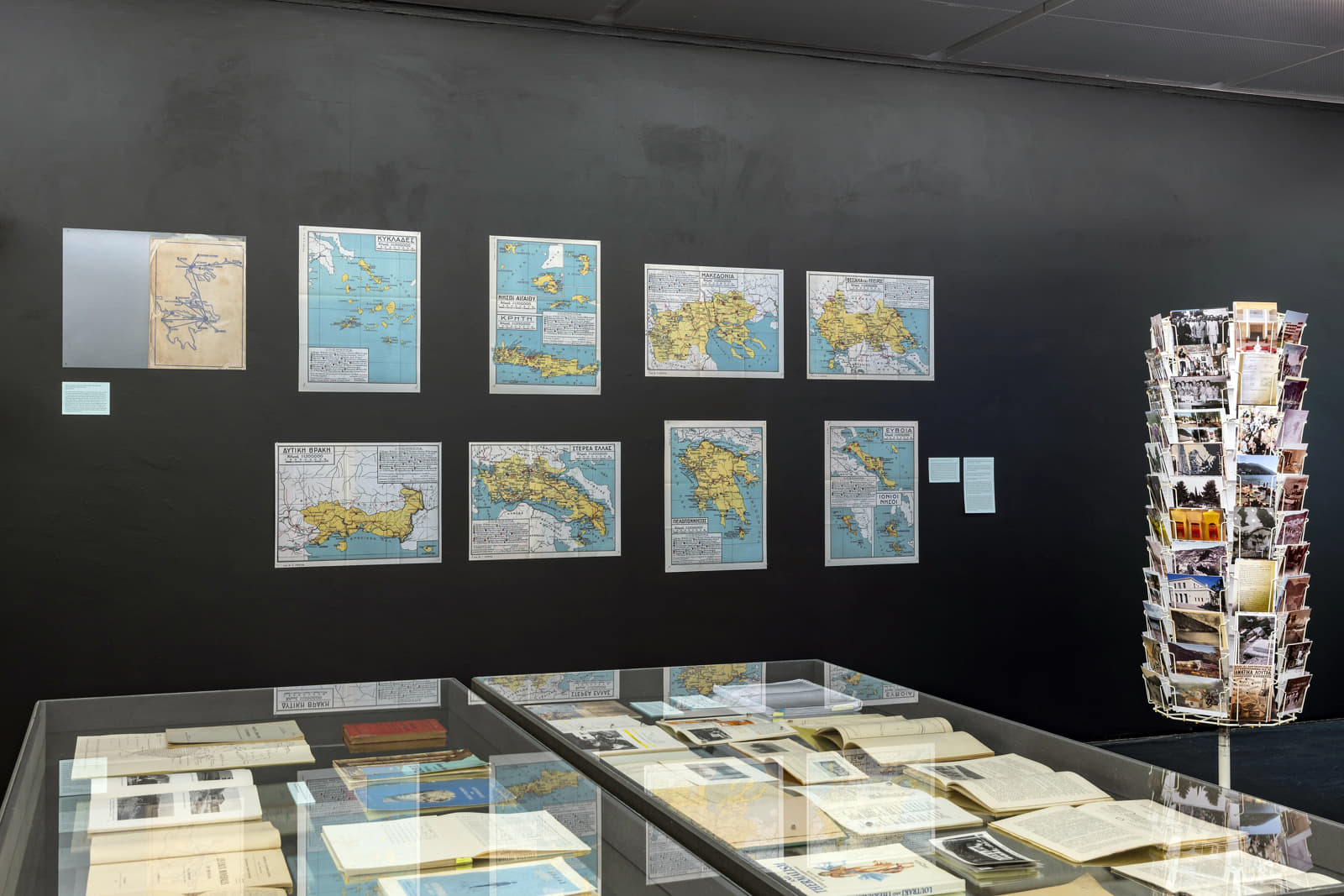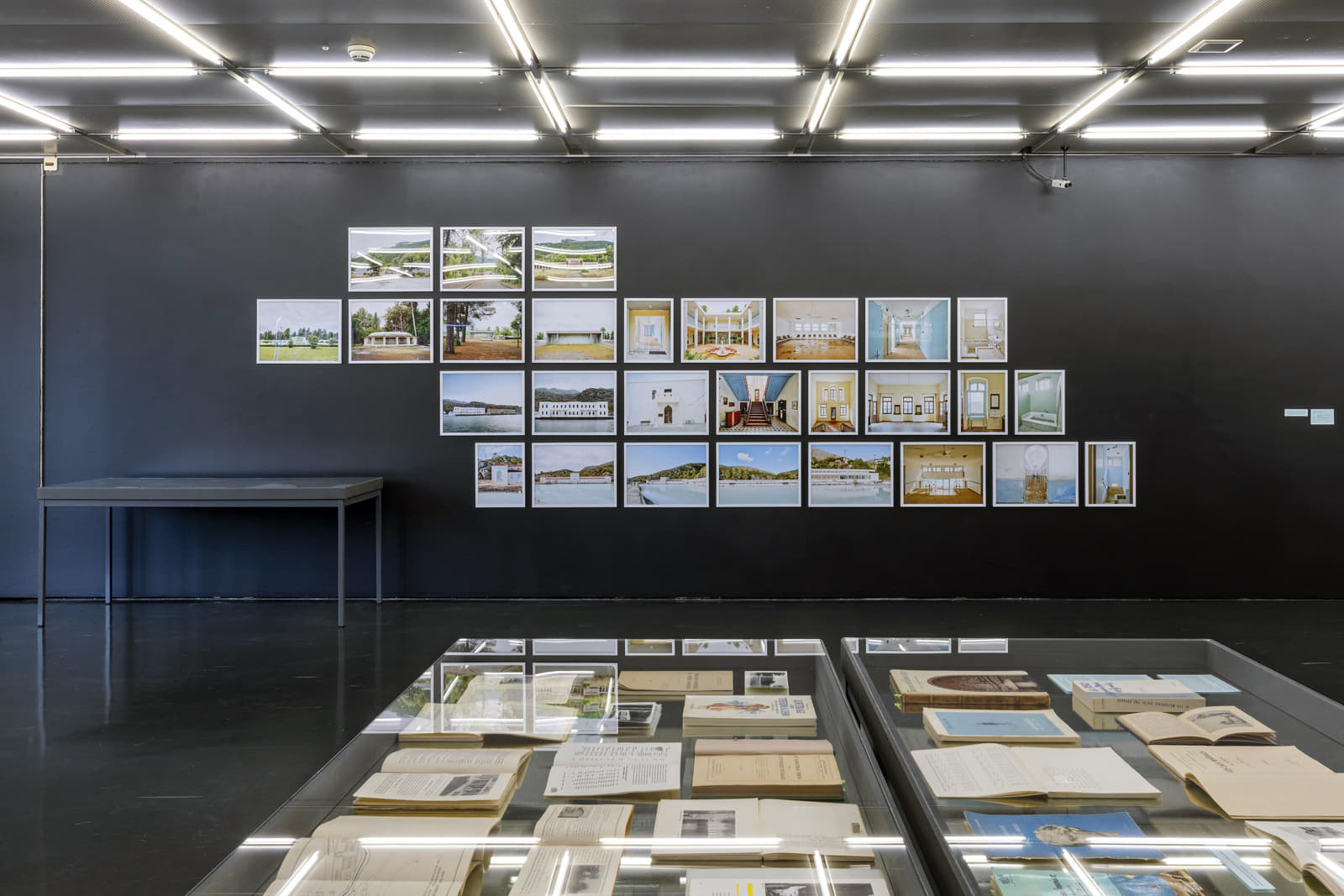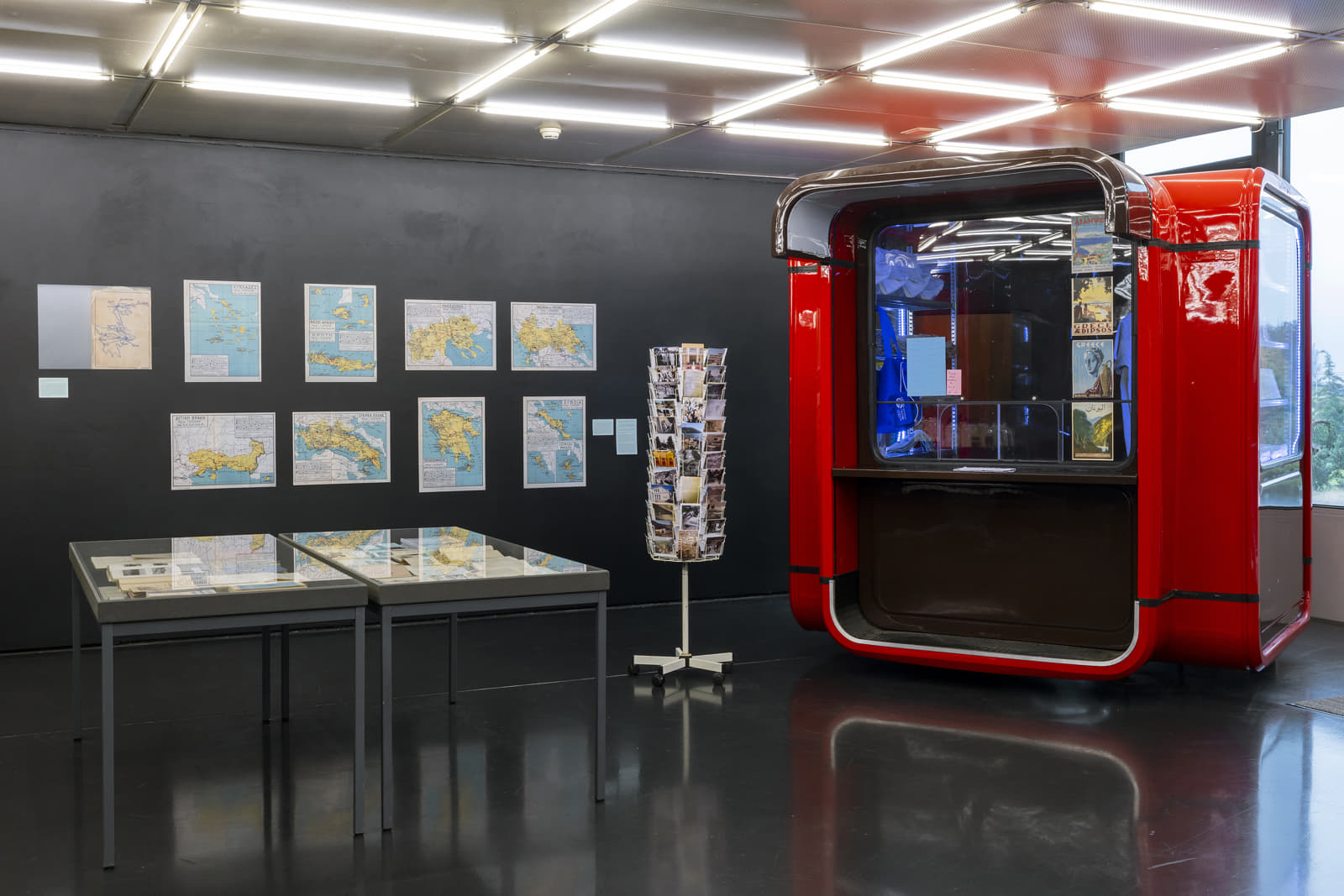The exhibition “Loutropolis Healing Springs and Baths in Greece”, hosted in gta exhibitions foyer of ETH Zurich explores the significance of Thermalism, the practice of ‘taking the waters,’ and the creation of ‘Loutropolis’ bath towns. Lydia Xynogala (ALOS), curator of the exhibition, focuses on the emergence of state-funded bathing towns at hot springs, by showcasing artifacts, fragments and a collection of mineral spring waters.
“Perhaps no country in the world possesses a greater abundance of mineral waters than Greece, nor is there any country in which they are less known,” wrote Frederick Strong, the English consul to Bavaria and Hannover in Athens, in his 1842 book ‘Greece as a Kingdom’.


This exhibition focuses on the profound influence of scientific exploration concerning hot springs, rocks, and soil in late 19th-century Greece, leading to a groundbreaking understanding of the nation’s landscape and mineral resources.
Hot springs across the nation were scrutinized, revealing a comprehensive chemical network with therapeutic attributes.



Medical professionals, chemists, and geologists developed insights through fieldwork, lab studies, and treatises, often dispatching mineral water samples to laboratories in Northern Europe. These geochemical evaluations laid the groundwork for tangible structures: state-built hydrotherapy clinics designed to address various conditions using the diverse properties of mineral waters.


Minerals such as sodium chloride, magnesium, or sulfates became the impetus for this major construction endeavor. Greek Thermalism – a nationwide ‘taking of the waters’ – had its peaks in the interwar and in the postwar eras. The state sought to take care of its citizens through the promotion of natural treatments for a wide range of medical symptoms.
Minerals were the matter of care. State-funded bathing towns at hot springs, so called ‘Loutropolis,’ emerged across the country.

The exhibition explores the significance of Thermalism, the practice of ‘taking the waters,’ and the creation of these state-sponsored bath towns, or Loutropolis.



It does so by re-enacting two pivotal historic moments: Greece’s display at the 1878 Paris World Fair with Pericles House where Section V, among various ground specimens featured bottles of mineral spring waters. It emerges from a period when the Greek landscape was meticulously studied and mapped by scientists, doctors, and writers.


For the financially struggling new Greek state, mineral resources symbolized progress and potential, subject to the scrutiny of the Great Powers. Minerals were not only seen as exploitable resources but also as therapeutic agents.

A re-enactment of Room No. 7 from the 1938 Hygiene Exhibition held during the Metaxas dictatorship features a half-scale replica of a hydrotherapy room, among other artifacts.
This exhibit reflects the Greek state’s organized efforts to promote its mineral-rich sites as international destinations for hydrotherapy and leisure tourism in the 1930’s.


A water bar displays mineral spring waters collected over the course of four years together with various historic artifacts and fragments of the Loutropolis found during Xynogala’s fieldwork.

The exhibition includes commissioned works by artist Vanessa Billy and photographer Tobias Wootton. The installation of a half-scale bathtub constructed from marble bricks is an ongoing material investigation into waste marble, a collaboration between ALOS / Lydia Xynogala and marble producer Marmyk Iliopoulos. It also includes actions and artifacts by Friends of the 750 Mineral Springs of Greece a non-profit association dedicated to the maintenance and preservation of an often-overlooked natural resource and cultural heritage.
Acknowledgments
Bathing can be solitary or communal; this research sprung from encounters and conversations in and out of the water and thus Lydia Xynogala would like to thank: curators Fredi Fischli and Niels Olsen with Mina Hava, Daniel Sommer at gta exhibitions for all their support into the making of this exhibition. Philip Ursprung, Michael Hampe and Elizabeth Povinelli for all their advice and insights and Lorenz Hurni, Apostolis Mastroyiannis, Miltos Papadimitropoulos, Ioanna Foka, Tasos Dambergis and Andreas Pantelides for access to archives and sites. Much appreciation to Anthony Acciavatti, David Bergé, Matthew Critchley, Vanessa Grossman, Adam Jasper, San Keller, Tim Klauser, Marcus Lehtenmaki, Faiq Mari, Metaxia Markaki, Ciro Miguel, Nikos Magouliotis, Davide Spina, Berit Seidel, and Nina Zschocke for their ongoing support while conducting this research. All the students at the seminar weeks in Nisyros and Methana with the Chair for the History of Art and Architecture in 2021 and 2024. The research for ‘The 750 Mineral Springs of Greece (Revisited)’ was supported by Onassis AiR. Much gratitude to Friends of the 750 Mineral Springs of Greece: James Bridle, Sophia Berdelis, Orestis Mavroudis, Alba Balmaseda, Kathrin Doppler, Eirini Sourgiadaki, iLiana Fokianaki, Joshua Olsthoorn, Christina Kotsilelou, Vanessa Billy and Tobias Wootton who help bring historical knowledge into the present and future.
Facts & Credits
Project title Loutropolis Healing Springs and Baths in Greece
Typology Exhibition, Art
Curation Lydia Xynogala in collaboration with gta exhibitions.
Location gta exhibitions, foyer, ETH Zurich, Hönggerberg
Date 13 November – 6 December 2024
Photography Nelly Rodriguez
READ ALSO: ‘MARILYN’ exhibition design with an elevated visitor experience and sustainability at its core | by Studioshaw
